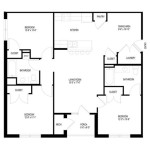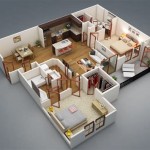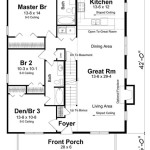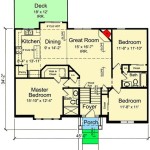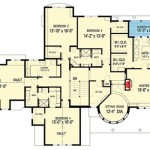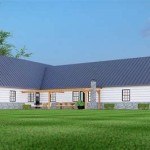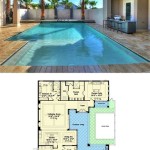3 Story Floor Plans For Houses
Three-story house plans offer a unique blend of spaciousness, privacy, and architectural versatility. They are an excellent choice for those seeking to maximize living space on a smaller footprint, particularly in urban environments or areas with strict building regulations. This article will explore some of the key considerations and advantages associated with three-story home designs.
Vertical Living and Space Maximization
One of the primary benefits of a three-story home is the efficient use of vertical space. This allows for a greater square footage within a smaller footprint compared to single or two-story homes. This vertical layout is especially advantageous in densely populated areas where land availability is limited or expensive. It allows homeowners to enjoy ample living space without requiring a large lot.
The stacked design also naturally lends itself to distinct zones for different activities. For example, the ground floor can be dedicated to public spaces like the living room, dining area, and kitchen, fostering a sense of community. The second floor can then house private areas such as bedrooms and bathrooms, providing a quiet retreat. The third floor can be used for a variety of purposes, from a home office or studio to a guest suite or entertainment area, offering flexibility and adaptability to changing needs.
Enhanced Privacy and Views
The elevated nature of three-story homes provides an inherent advantage in terms of privacy. Bedrooms located on upper floors are naturally secluded from street-level activity and offer a greater sense of seclusion. This is particularly beneficial in urban settings or neighborhoods with close proximity to neighbors.
Moreover, three-story homes often afford better views compared to lower structures. Upper floors can capitalize on panoramic vistas, overlooking surrounding landscapes, cityscapes, or natural features. This can significantly enhance the overall living experience and add value to the property. Strategic window placement and balcony designs can further maximize these views and bring the outdoors in.
Design Considerations and Challenges
While three-story homes offer numerous advantages, certain design considerations and potential challenges must be addressed during the planning phase. Staircase design is paramount in a multi-level home. Staircases should be strategically located for easy access to all floors and designed to be both functional and aesthetically pleasing. Consideration must be given to the width, rise, and run of the stairs, ensuring they are comfortable and safe for all occupants, including children and the elderly.
Vertical circulation also impacts energy efficiency. Stack effect, the natural movement of air within a building due to temperature differences, can be more pronounced in taller structures. Proper insulation and ventilation strategies are crucial to mitigate energy loss and maintain a comfortable indoor environment.
Accessibility is another key consideration. While elevators are an option for some, they can add significant cost to the project. Careful planning is required to ensure reasonable accessibility for all occupants, particularly those with mobility challenges. Consider incorporating features like a first-floor bedroom or bathroom to accommodate future needs.
Variety in Architectural Styles
Three-story house plans are adaptable to a diverse range of architectural styles, from traditional to contemporary. They can be designed to seamlessly blend with the surrounding neighborhood or make a bold architectural statement.
Traditional three-story homes often feature classic details such as gabled roofs, dormer windows, and decorative moldings. Contemporary designs may incorporate clean lines, large windows, and open floor plans, emphasizing natural light and a connection to the outdoors.
The versatility of three-story homes extends to the exterior materials used. Brick, stucco, wood siding, and fiber cement are popular choices, each offering different aesthetic qualities and levels of durability. The choice of materials can be tailored to complement the architectural style and the surrounding environment.
Cost Implications
Building a three-story home typically involves higher construction costs compared to a single or two-story home of the same square footage. The increased height necessitates more complex structural engineering and specialized construction techniques. The additional materials required for the foundation, framing, and roofing also contribute to the higher cost.
However, the higher initial investment can be offset by the potential for greater resale value. The increased living space and desirable features offered by three-story homes can make them highly attractive to buyers, particularly in competitive markets.
Ultimately, the cost of building a three-story home will vary depending on several factors, including the size and complexity of the design, the location, and the choice of materials and finishes. Thorough planning and budgeting are essential to ensure the project stays within the desired financial parameters.

Downsizing House Plans 3 Story Town Home Floor

Plan 23794jd Beautiful 3 Story Craftsman House With 5 Or 6 Bedrooms Plans

Three Story Modern House Plan Designed For The Narrow Front Sloping Lot 23699jd Architectural Designs Plans

Three Story Condo Floor Plan Plans Model House

3 Story House Plan With Bonus Room Third Level 23827jd Architectural Designs Plans

Craftsman House Plans And Style

New Floor Plans For 3 Story Homes Residential House Plan Custom Home

Three Story Urban House Plans Inner City Tnd Development Vintage Sims Blueprints

3 Story 4 Bedroom Lake Or Mountain House Plan

House Plans Design 10x11 With 3 Bedrooms Home Ideas Double Story


